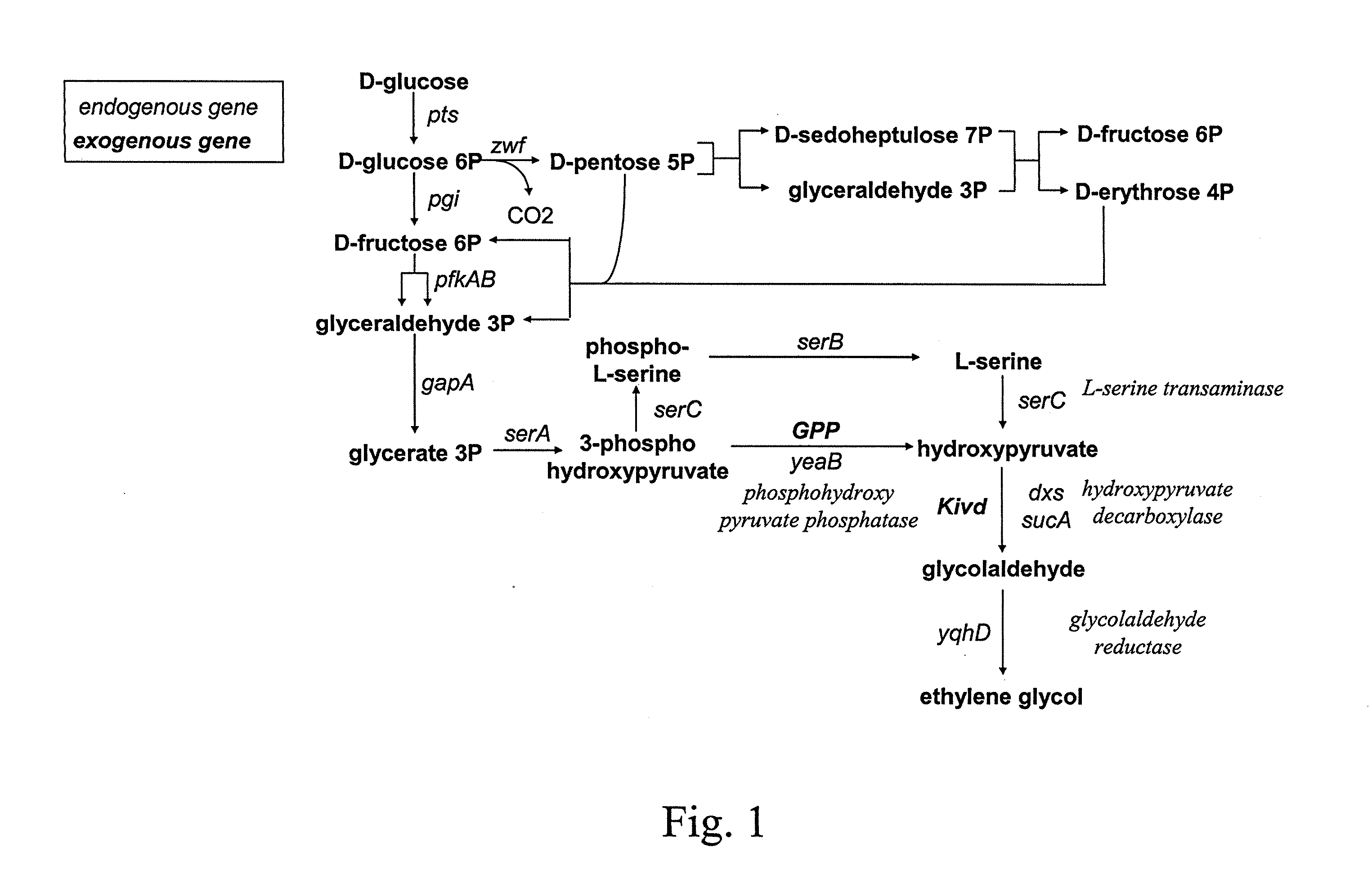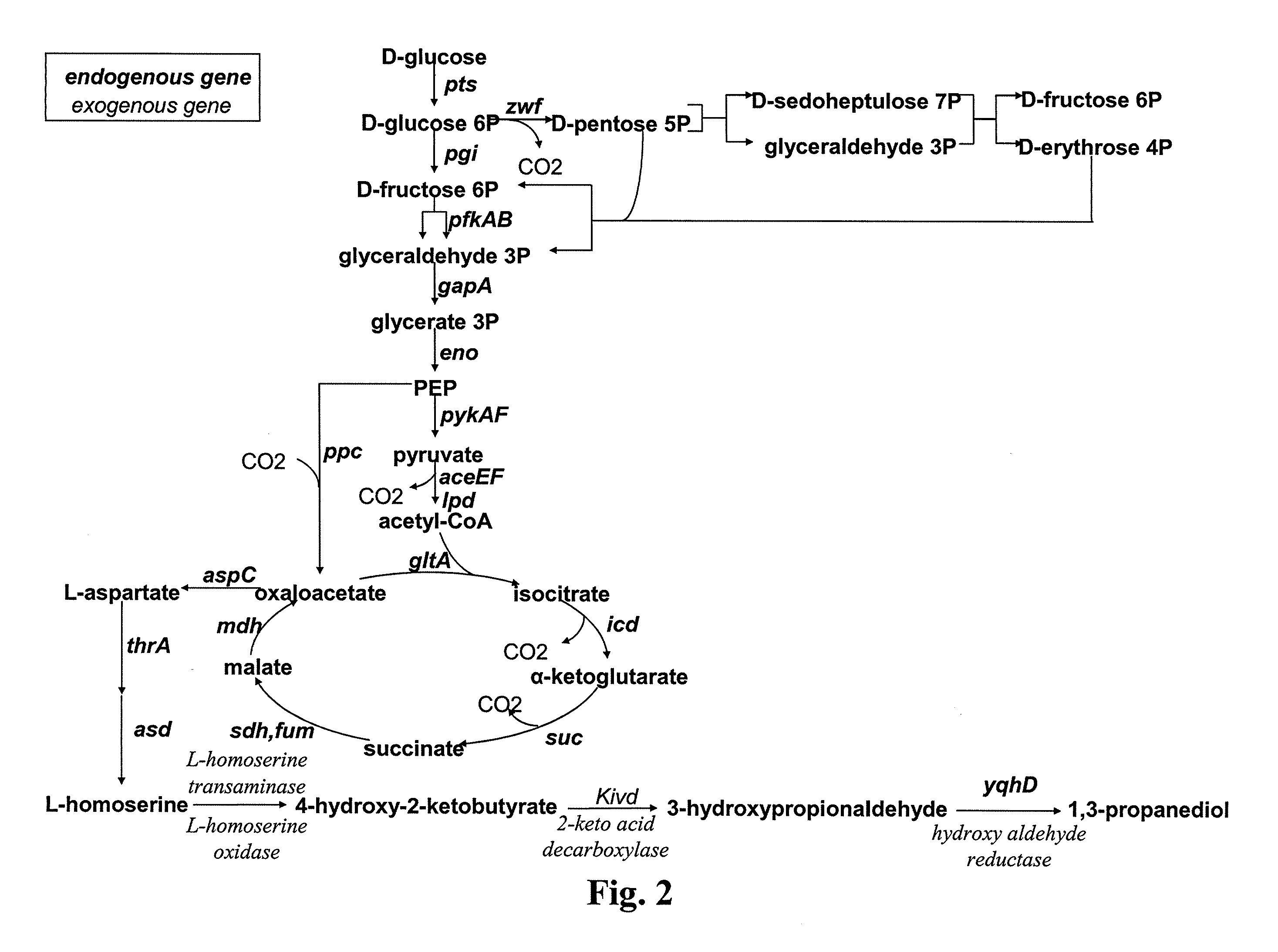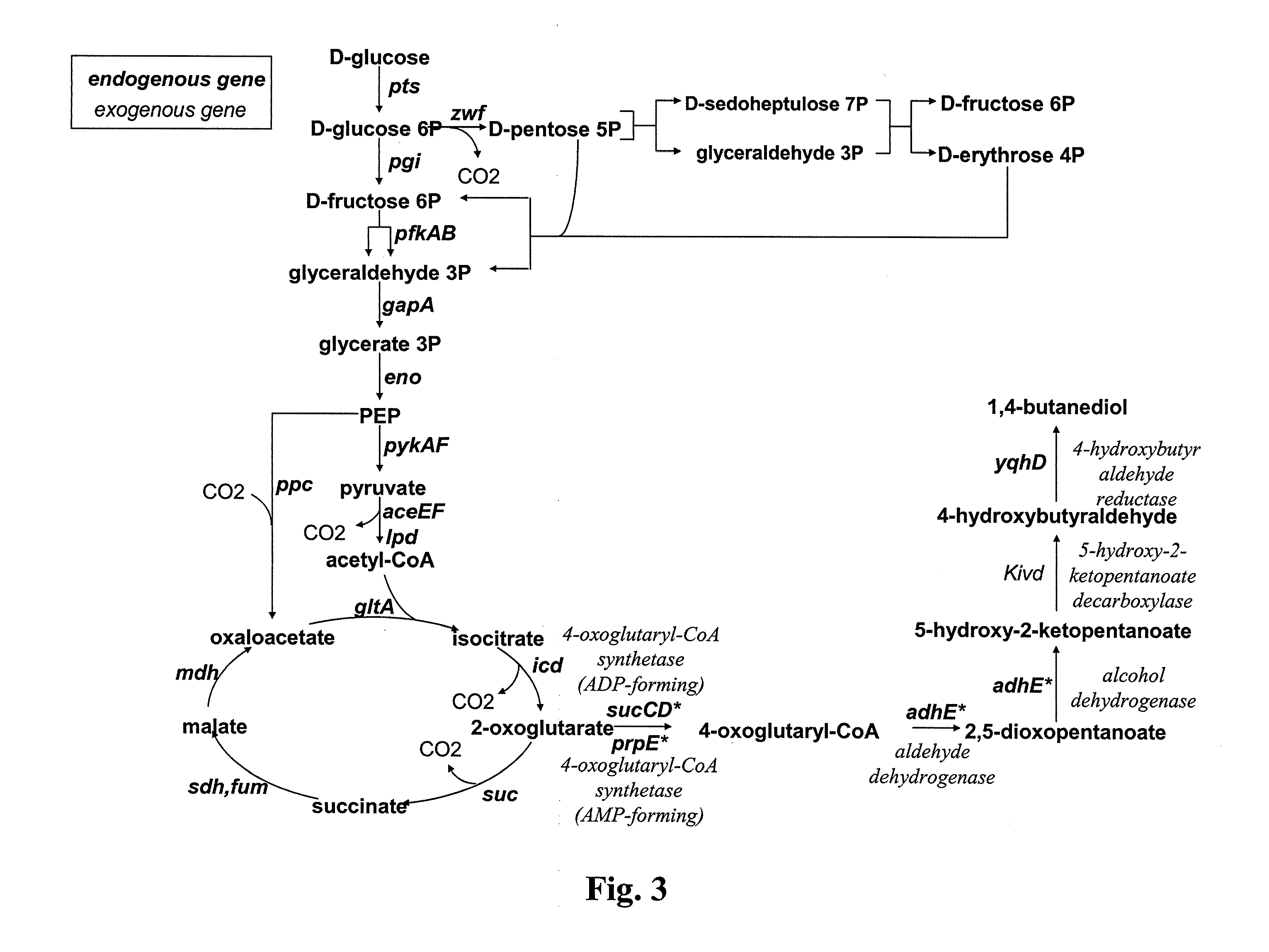Method for the preparation of diols
a biological preparation and diol technology, applied in the field of biological preparation of diols, can solve the problems of high production process costs, and achieve the effect of enhancing the expression of endogenous genes
- Summary
- Abstract
- Description
- Claims
- Application Information
AI Technical Summary
Benefits of technology
Problems solved by technology
Method used
Image
Examples
specific embodiments
[0067]Other embodiments of the invention will be described below. The microorganisms are modified both to favor the production of the hydroxy-2-keto-aliphatic acid metabolite and the transformation into the corresponding aliphatic diol of the product obtained from the decarboxylation step of the same hydroxy-2-keto-aliphatic acid metabolite.
[0068]The description below is made by reference to E. coli, which microorganism is lacking endogenous 2-keto acid decarboxylase activity. Therefore, a heterologous gene coding for said activity is introduced into the microorganism.
[0069]Modifications of the microorganism to optimise the pathway for producing the hydroxy-2-keto-aliphatic acid metabolite and to transform the product obtained from the decarboxylation step of the same hydroxy-2-keto-aliphatic acid metabolite into the aliphatic diol is also made based on the known metabolic pathways and endogenous genes of E. coli. However, the man skilled in the art can use similar strategies to int...
example 1
[0111]Construction of strains expressing a 2-keto acid decarboxylase encoding gene and a hydroxy aldehyde reductase encoding gene: MG1655
[0112](pME101-kivDll-yqhD-TT07)
[0113]1.1 Construction of the Plasmid pM-Ptrc01-kivDll-TT07 for the Overexpression of kivD of Lactococcus lactis Encoding Alpha-Keto-Isovalerate Decarboxylase:
[0114]A synthetic gene of the Lactococcus lactis kivD coding for the alpha-keto-isovalerate decarboxylase was prepared by Geneart (Germany). The codon usage and GC content of the gene was adapted to Escherichia coli according to the supplier matrix. Expression of the synthetic gene was driven by a constitutive Ptrc promoter. A transcriptional terminator was added downstream of the gene. The construct was cloned into supplier's pM vectors and verified by sequencing. If necessary, the synthetic gene was cloned into the pME101 vector (This plasmid is derived from plasmid pCL1920 (Lerner & Inouye, 1990, NAR 18, 15 p 4631)) before transforming an E. coli strain.
[0115...
example 2
[0125]Construction of strains with increased ethylene glycol pathway flux: MG1655 ΔsdaA ΔsdaB ΔpykF Ptrc18-gpmA Ptrc18-gpmB (pME101-kivDll-yqhD-TT07)
[0126]2.1 Construction of the MG1655 ΔsdaA ΔsdaB Strain
[0127]To delete the sdaA gene, the homologous recombination strategy described by Datsenko & Wanner (2000) was used. This strategy allowed the insertion of a chloramphenicol or a kanamycin resistance cassette, while deleting most of the genes concerned. For this purpose the following oligonucleotides were used:
[0128]ΔsdaAF (SEQ ID NO 10)
[0129]gtcaggagtattatcgtgattagtctattcgacatgtttaaggtggggattggtccctcatcttcccataccgtagggccTGTAG GCTGGAGCTGCTTCG with[0130]a region (lower case) homologous to the sequence (1894941-1895020) of the sdaA gene (reference sequence on the website http: / / genolist.pasteur.fr / Colibri / ),[0131]a region (upper bold case) for the amplification of the kanamycin resistance cassette (reference sequence in Datsenko, K. A. & Wanner, B. L., 2000, PNAS, 97: 6640-6645),
[0132...
PUM
| Property | Measurement | Unit |
|---|---|---|
| temperature | aaaaa | aaaaa |
| temperature | aaaaa | aaaaa |
| temperature | aaaaa | aaaaa |
Abstract
Description
Claims
Application Information
 Login to View More
Login to View More - R&D
- Intellectual Property
- Life Sciences
- Materials
- Tech Scout
- Unparalleled Data Quality
- Higher Quality Content
- 60% Fewer Hallucinations
Browse by: Latest US Patents, China's latest patents, Technical Efficacy Thesaurus, Application Domain, Technology Topic, Popular Technical Reports.
© 2025 PatSnap. All rights reserved.Legal|Privacy policy|Modern Slavery Act Transparency Statement|Sitemap|About US| Contact US: help@patsnap.com



